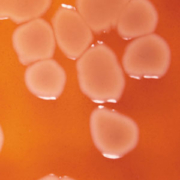The role of hospital cleaning in controlling infection
Patients are at risk of infection from the numerous types of pathogens that can survive in hospitals. The cleaning process could have a huge impact on this risk if it is aimed at the most frequently contaminated sites, removes or kills viable organisms and is carried out sufficiently frequently to inhibit accumulation of pathogens. Whilst there are an increasing number of products on the market to facilitate the cleaning process, evidence of their efficacy is needed. Frequent detergent-based cleaning also requires urgent appraisal in order to compare alternatives for cleaning hospitals.
by Dr Stephanie J. Dancer
More evidence is accumulating for the role of cleaning in controlling infection in hospitals. There are a variety of hardy hospital pathogens such as meticillin-resistant Staphylococcus aureus (MRSA), vancomycin-resistant enterococci (VRE), norovirus, Acinetobacter and Clostridium difficile, all of which can persist in healthcare environments for considerable lengths of time. Basic cleaning can help in the control of these pathogens, usually as part of an overall package in response to an outbreak, but there is also a role for enhanced cleaning in the non-outbreak situation. Organisms on hand-touch sites in hospitals are thought to provide the most important risk for transmission because hand contact with a contaminated site could deliver a pathogen to a patient. However, current cleaning regimens do not necessarily target high-risk reservoirs and there remains confusion between nursing and domestic personnel over allocation of cleaning responsibilities. Whilst there is little evidence for the most effective cleaning frequencies, some sites do not receive the cleaning attention that they deserve. Thus, cleaning practices should be tailored to clinical risk, as well as reflect the wide-ranging surfaces, equipment and building designs in today


